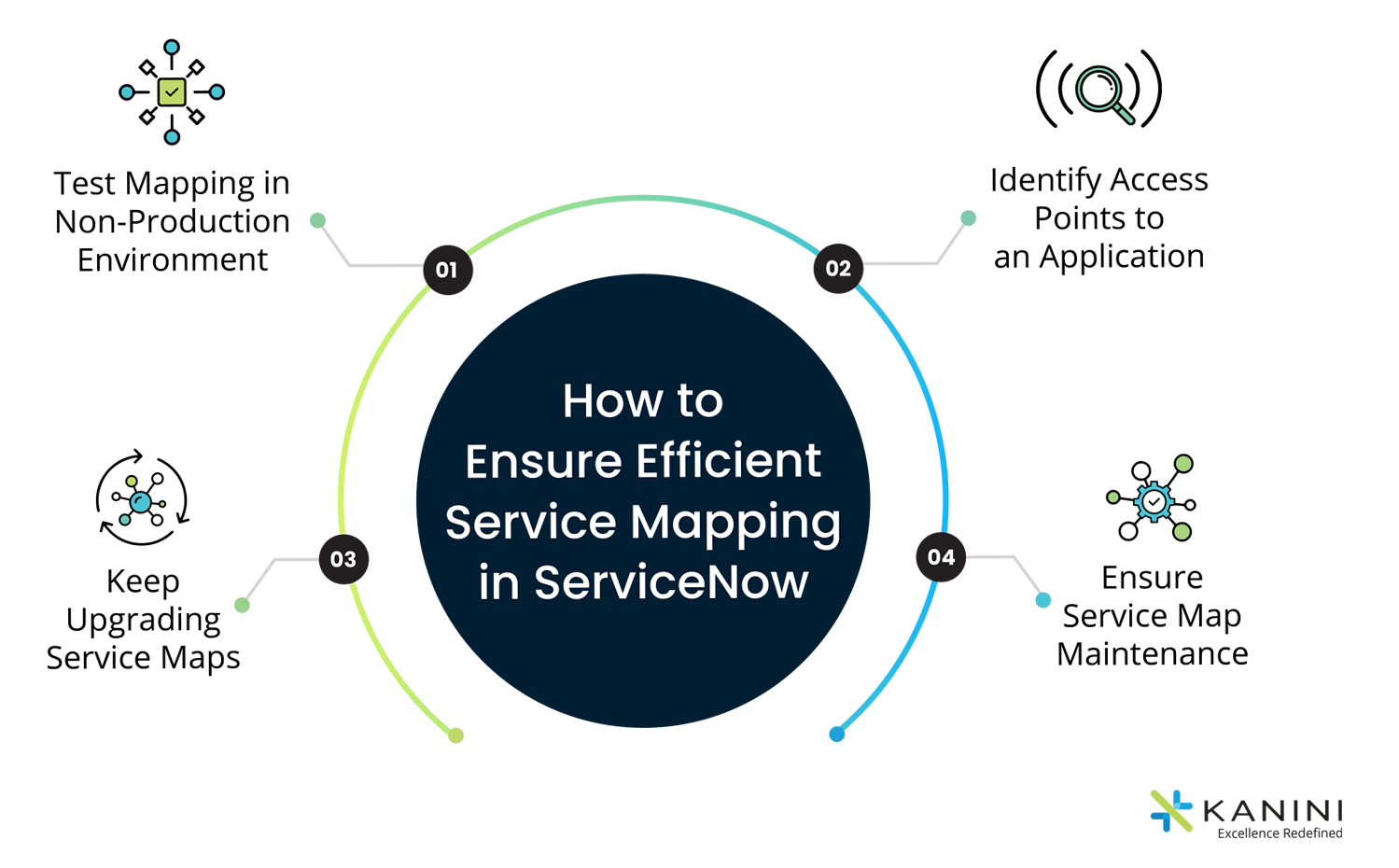Service Mapping is essential to identify the flaws in your IT infrastructure that make up a service, fix them quickly, and further improve your business services for consistent customer satisfaction and continuous growth.
For most companies that handle complex business operations and where there are many servers, networks, databases, and applications, automated service mapping has become a must-have solution.
In this article, we will discuss why enterprises should pursue ServiceNow® automated service mapping and how it helps them grow their business by driving service-aware operations that deliver a clear picture of the relationships between the company’s applications, IT components, and cloud services.
How does ServiceNow Service Mapping help in Overcoming the Challenges of Manual Mapping Processes?
With service mapping, enterprises can utilize the discovered data of configuration items (CI) and identify their relationship with other components and populate their CMDB with service maps quickly and efficiently. Automated service mapping keeps the CMDB up-to-date consistently, which manual processes fail to accomplish considering the complexities that exist today.
ServiceNow Service Mapping Benefits:
- Identifies the underlying infrastructure components easily and resolves service outages faster.
- Optimizes business services efficiently for improved performance and better customer satisfaction.
- Reduces the time taken to map a large number of services when compared to manual mapping.
- Prioritizes application vulnerabilities easily and resolves them based on their criticalities.
How does ServiceNow Service Mapping work?
1. Top-down mapping
2. Intelligent traffic-based mapping
3. Tag-based mapping
Automate Service Mapping with ServiceNow
Read this whitepaper to understand how ServiceNow can help automate the service mapping process.
How to Ensure Efficient Service Mapping in ServiceNow?
Here are some of the important decisions that enterprises need to consider to ensure seamless implementation of ServiceNow service mapping for better customer satisfaction:

1. Test Mapping in Non-Production Environment
Likewise, for efficient service mapping implementation in ServiceNow, enterprises can initially undertake the process in a testing environment and then move it to the live operating environment. This way, the end-user instance remains more secure, and services can be mapped quickly and efficiently. This is an important point to consider during the initial stages of the service mapping process.
2. Identify Access Points to an Application
The next important step in the service mapping process is to identify the entry points – access points to an application. It is essential to extract the entry points and credentials of the application services to map services. There are three approaches to identifying entry points during the mapping process – identifying manually entered entry points, importing entry points from a CSV file, and a load balancer discovery approach (which leverages automation to identify access points).
3. Keep Upgrading Service Maps
4. Ensure Service Map Maintenance
Wrapping Up
KANINI, a ServiceNow Premier Partner, helps enterprises in transforming their IT operations through smooth implementation of ServiceNow service mapping. Reach out to us at transformations@kanini.com to know more about our ServiceNow implementation services.
Author

Joshua Smith
Joshua is a process improvement thought leader and digital transformation expert at KANINI. Over the past 15 years, his focus has always been on achieving organizational maturity and enhancing business processes through implementing tools and workflows to drive transformation initiatives. With experience in multiple verticals from – manufacturing to healthcare, Joshua brings a practitioner’s perspective when working on business solutions and goals to allow him to advise and guide on industry and process best practices.








